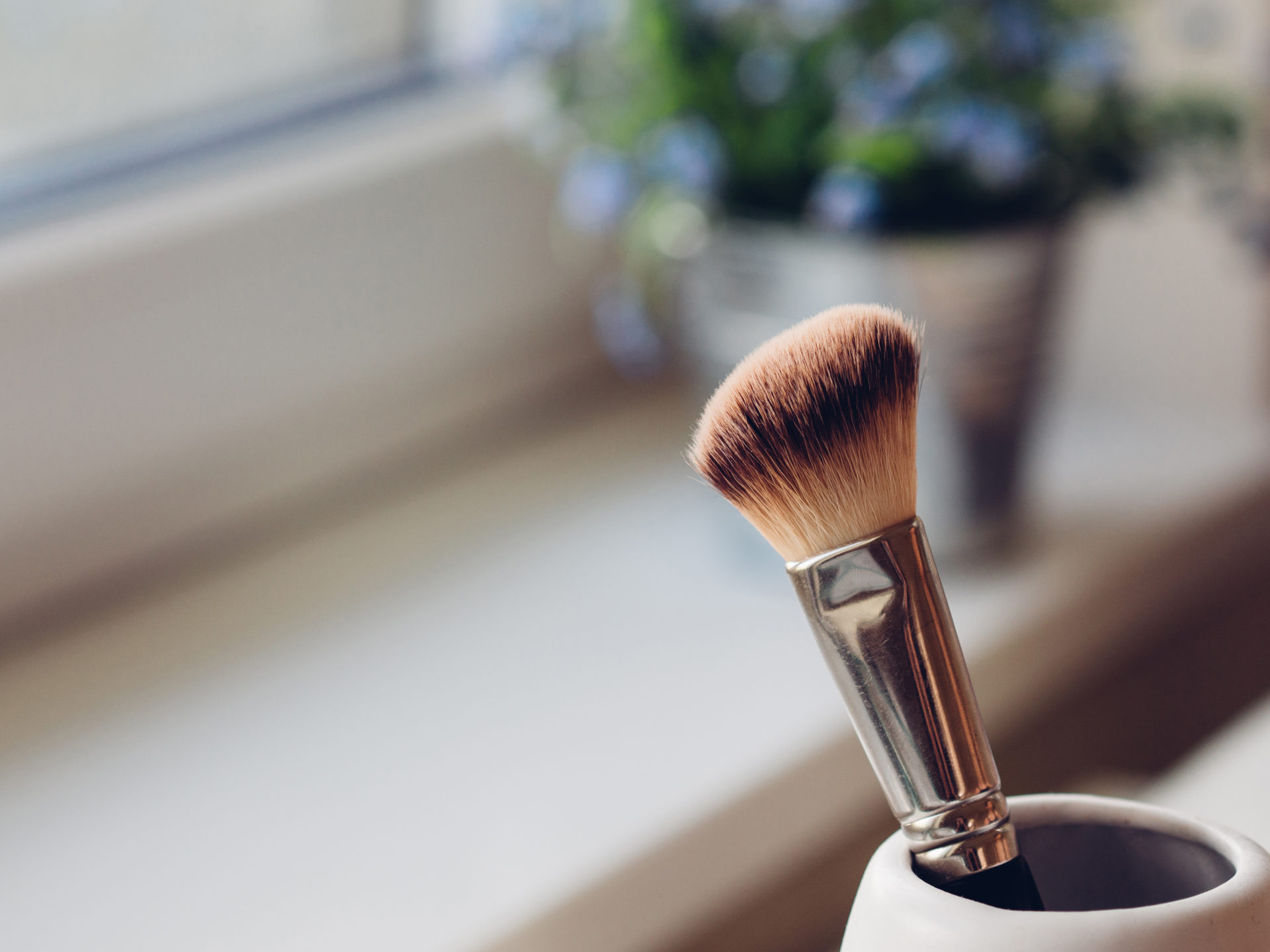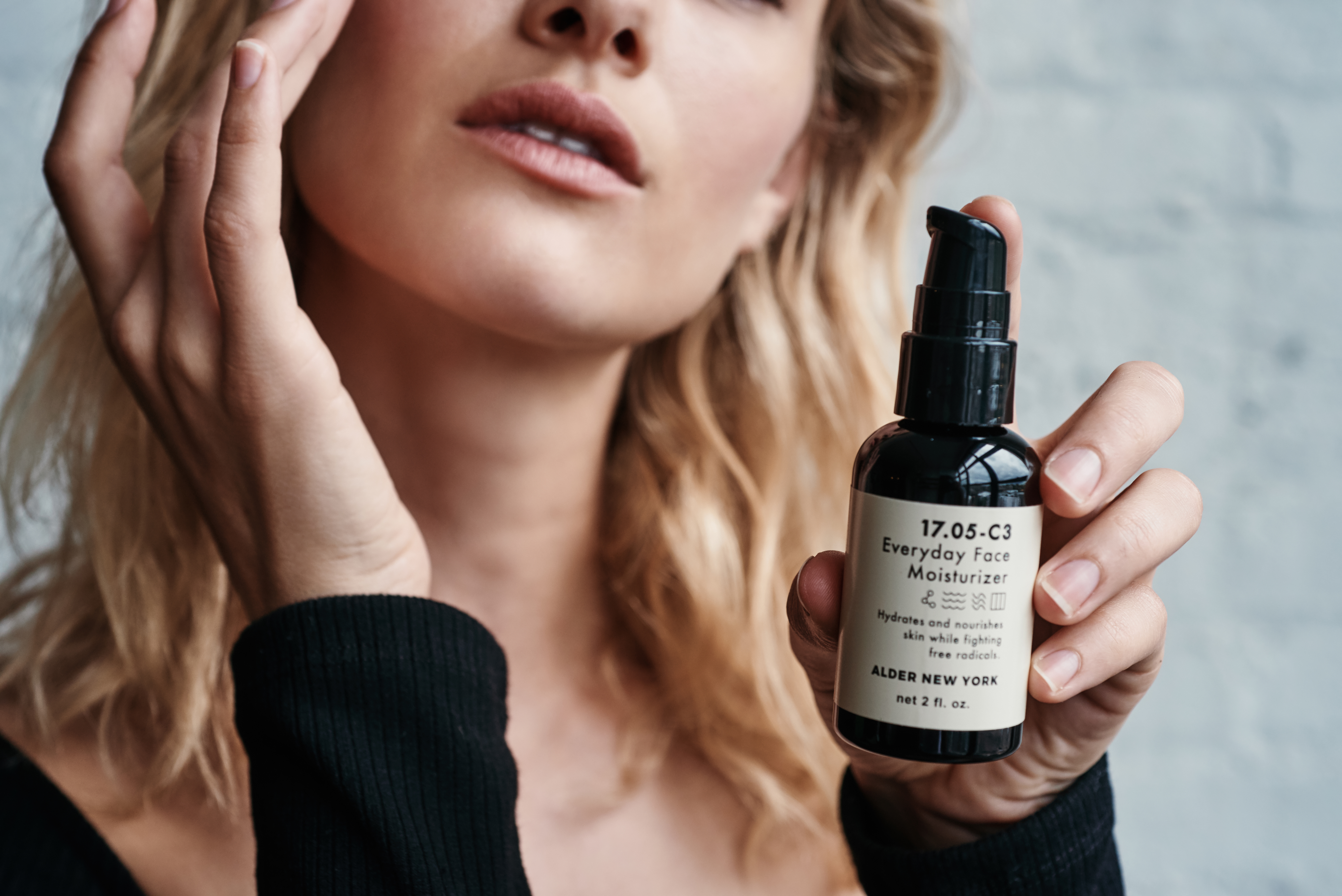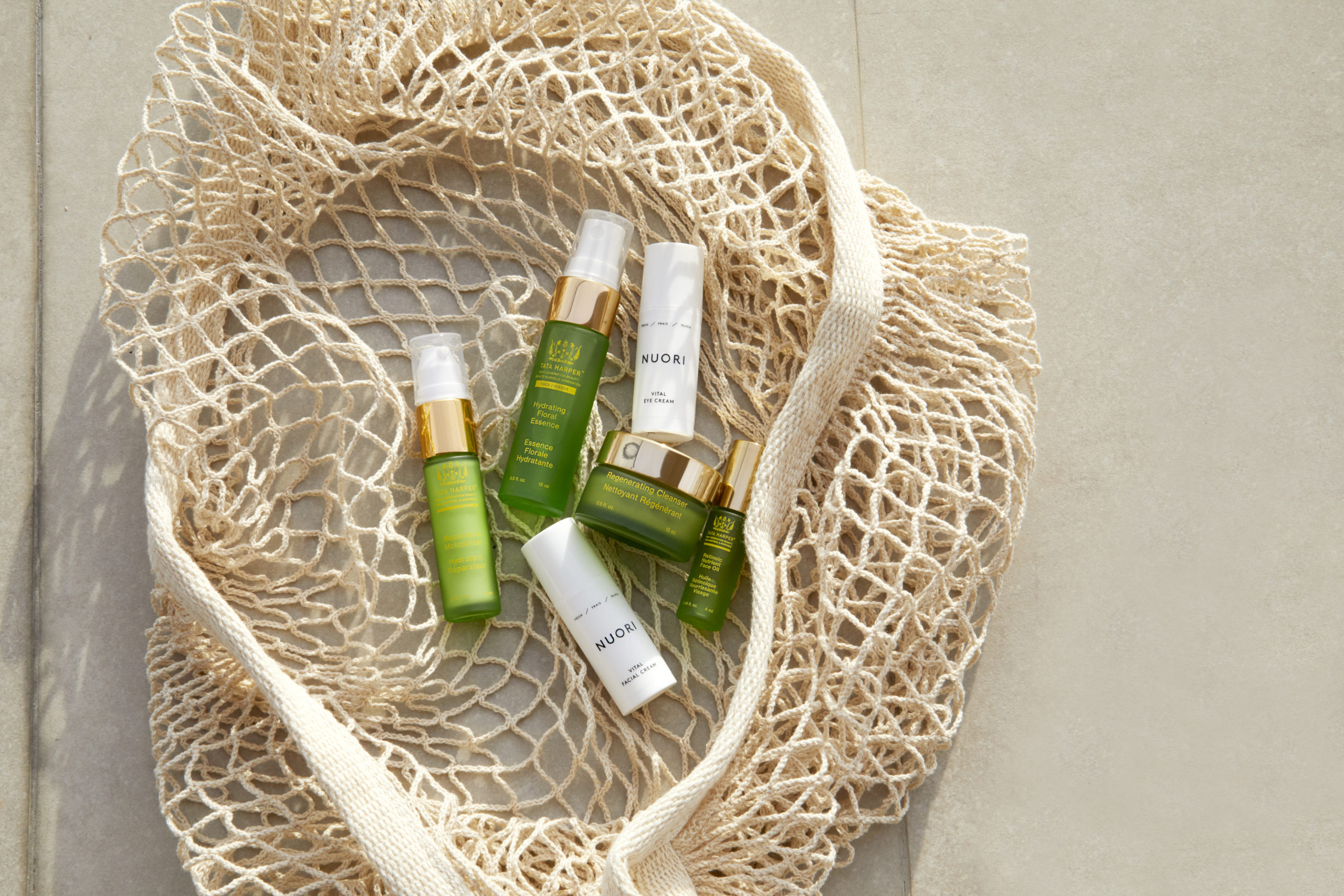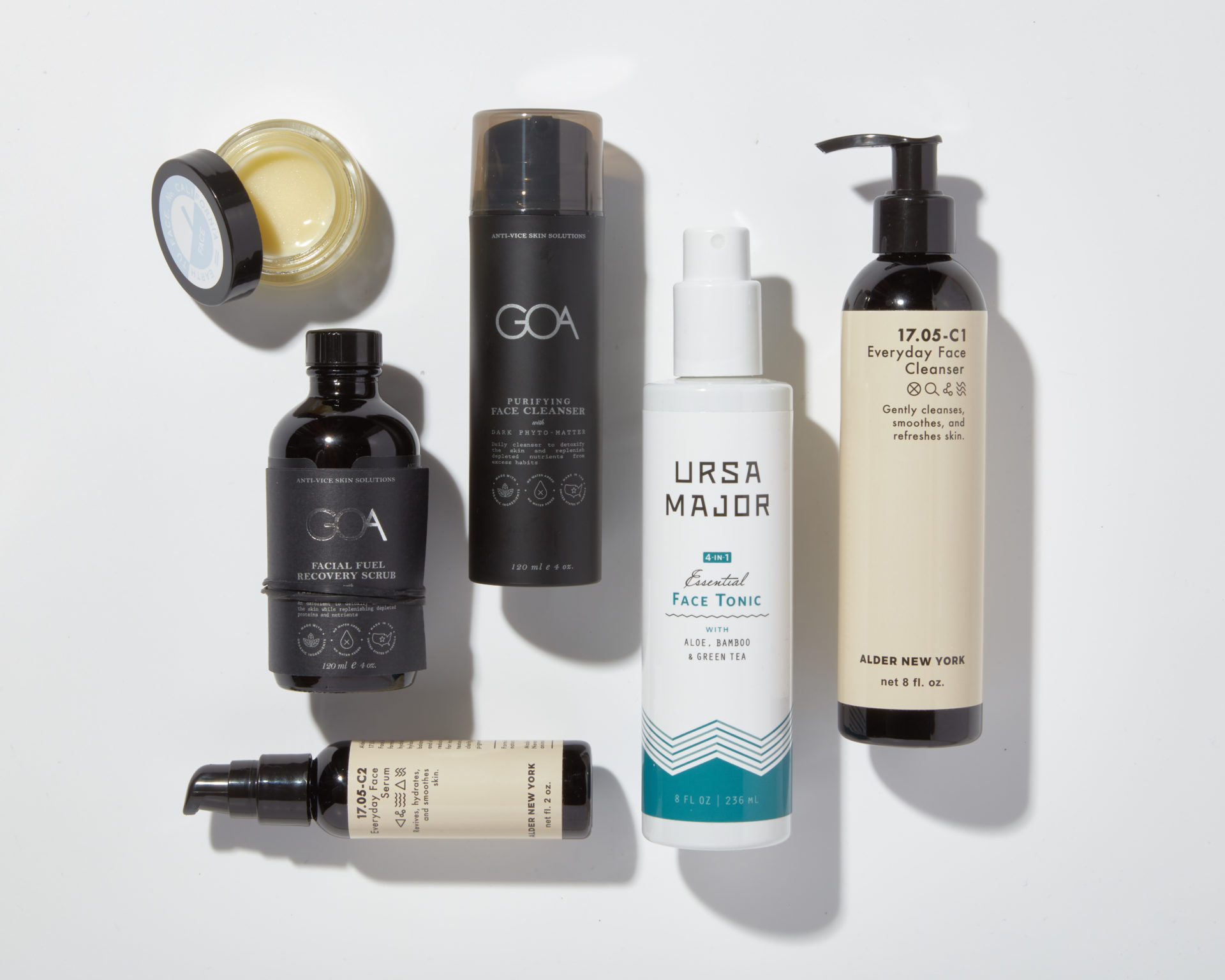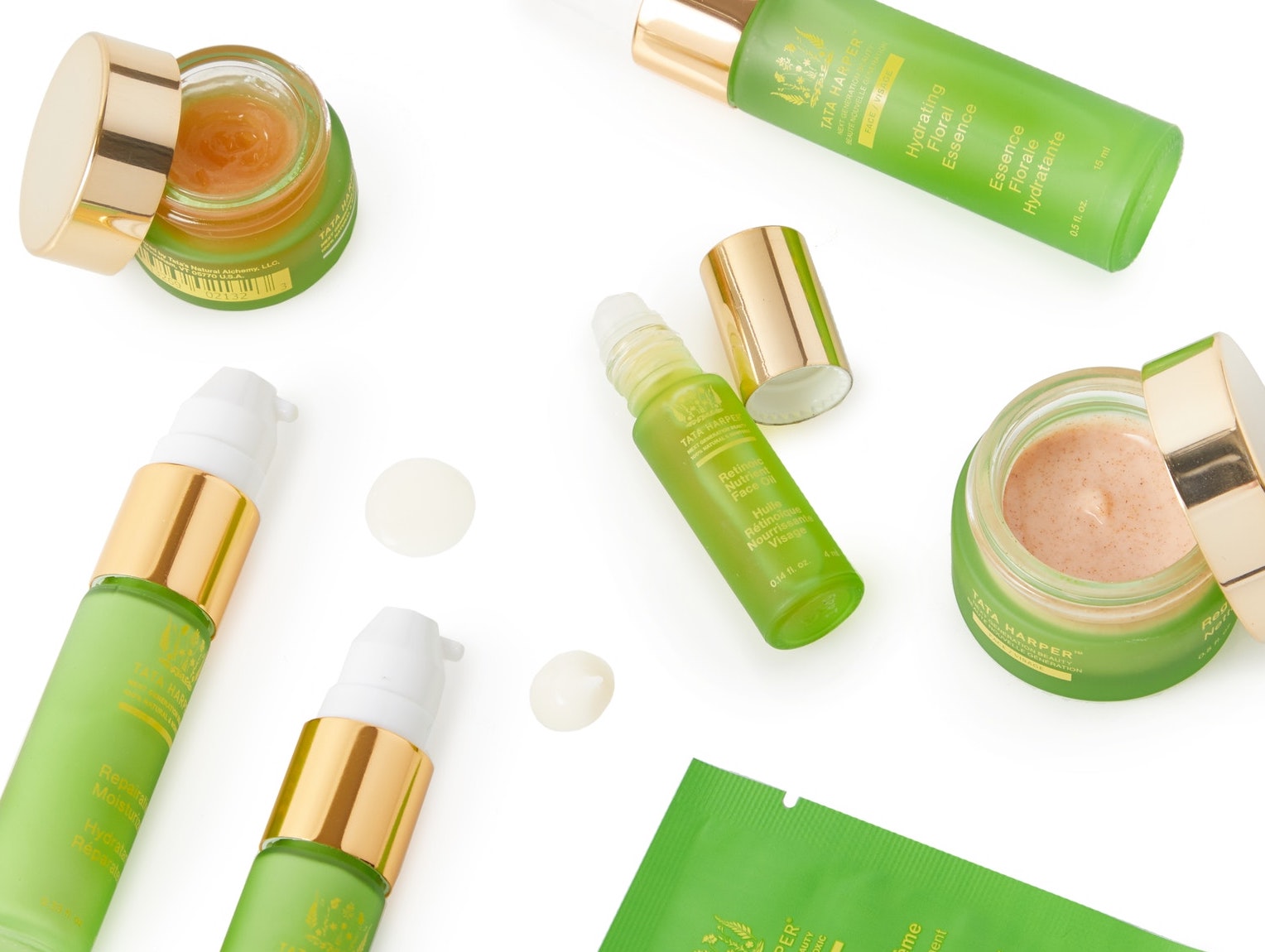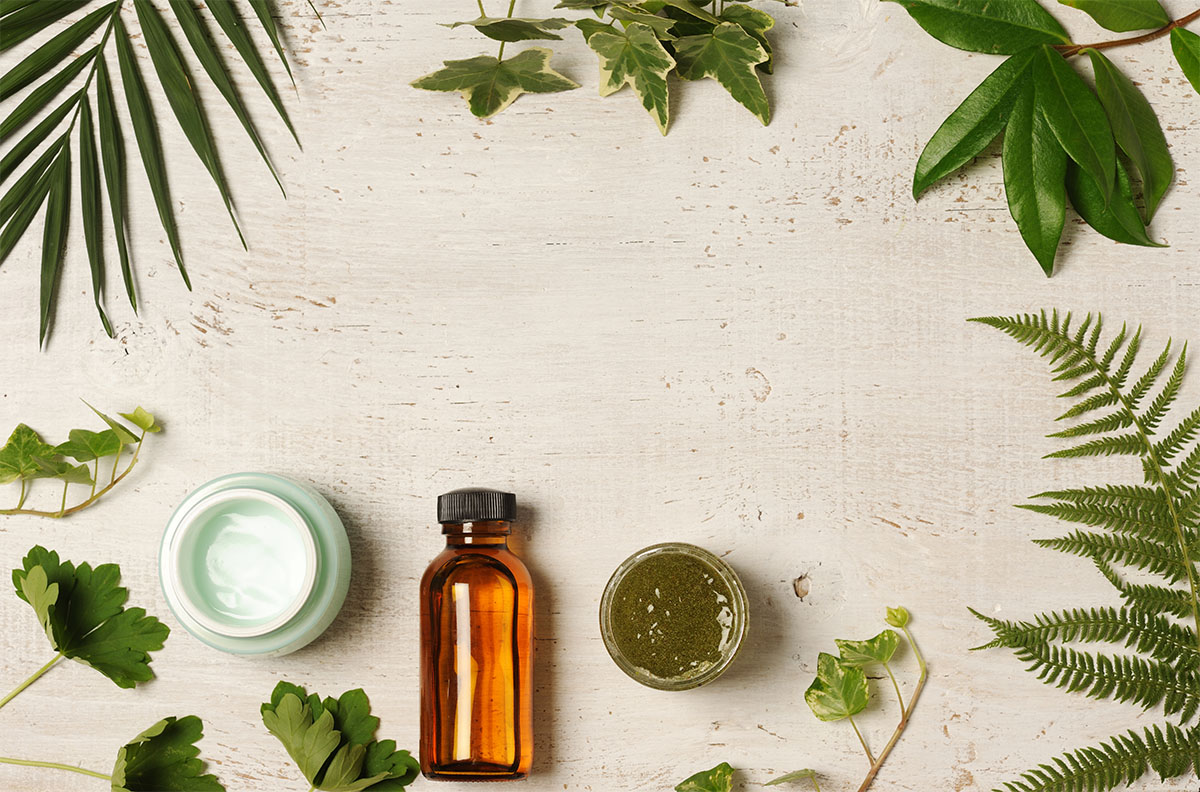It’s amazing how much stuff we interact with on a daily basis that we just… never think to clean. Like when was the last time you sprayed down the doorknob to your bathroom, even though it gets touched every single day? (Go ahead and take care of that, we’ll wait.) We get into patterns of cleaning certain items religiously — you’d never reuse a fork without washing it, right? — while others just get totally forgotten.
Like beauty tools for example. You probably use them on a regular basis, if not daily, which means you’re touching these objects with your paws all the time, yet you never really clean them off.
And a lot of these go on our faces! After spending cash on pH-balanced products to keep our skin’s microbiome healthy, it seems silly to not at least clean the tools that touch it all the time.
These cleaning tips are good for everyone, but if you’ve been experiencing more breakouts than usual, you should pay extra close attention: Cleaning your makeup brushes and other beauty tools on a regular basis can help rid your living space of germs that may be affecting your skin. Even tools like your curling iron could be contributing to the problem if they’re caked in layers of product that end up transferring from your hair to your face.
Several of these tips require rubbing alcohol. We recommend using 70% isopropyl. Because alcohol can harm the skin’s natural barrier, it’s wise to wear gloves with it so you don’t interact with it directly (although not strictly necessary).
How to Clean Makeup Brushes
The best way to clean makeup brushes is the same way an artist washes her paintbrushes. You’ll want to do this on a regular basis (the experts say weekly). This not only gets rid of any residual color lurking in your makeup brushes, which can make your look a little muddier, but also takes care of most of the germs knocking around in there.
Here’s how: Squeeze a nickel-size amount of baby shampoo into the palm of your hand, add a little warm water, and swoosh your brush around until it’s nice and foamy (about 30 seconds). Rinse until the water runs clear, then dry on a clean towel.
To really deep clean your makeup brushes — say, after a friend used them or after you’ve had a cold or acne outbreak — use a brush cleaner. Or DIY your own by combining isopropyl alcohol, dish soap and baby shampoo in a bowl, then swishing the brushes around until the colors have released. Then rinse and dry as above.
NB: Depending on your climate, your beauty tools will probably be damp overnight. And thicker, fluffier ones like powder brushes may take a little longer to dry than eyeshadow ones, so you may want to stagger your cleaning process.
How to Clean Eyelash Curlers
Eyelash curlers are one of the most important beauty tools to clean on a regular basis because of their proximity to, well, your eyeballs. This is especially true for anyone who wears contacts but applies to everyone.
On a regular basis (just about weekly), go ahead and take a clean cloth or cotton pad and wipe down the eyelash curler with rubbing alcohol. You can pop the pad out and wipe that down separately to remove any excess mascara, then replace it as it starts to wear down, every three to six months or so.
How to Clean Your Hairbrush
First off, it’s important to get rid of as much of the hair in your brush as possible. You can use your fingers (they’re excellent tools, really) or pick up one those cheap-but-effective little metal picks from a beauty supply store.
Once you’ve removed all the hair, you’re left with that weirdly gummy-yet-flaky gunk. So appealing, isn’t it? Basically, that’s a combo of all the product you’ve been using — hi, months-old dry shampoo! — flakes from your scalp and regular old dust. It’s kind of ick, and it doesn’t belong in your hairbrush, so wash it out with a mild shampoo, using your fingers or even a toothbrush to get in there and scrape it out.
If your brush has a wooden backing, try to keep the wooden side from soaking in water too long (which can warp it). For these, try filling a small bowl with warm, soapy water, and swishing the brush in it facedown. With all-plastic brushes, you can just toss ’em into this bath and let them soak it out.
After washing, rinse until the water runs clear with no bubbles, then dry your beauty tools on a soft towel, brush side down, overnight.
How to Clean Your Curling Iron and Straightener
Because these are metal and don’t come into contact with anything other than your hair, you don’t have to clean these beauty tools as often. However, they do tend to gather some product buildup, so wipe them down with a clean cloth and some rubbing alcohol every so often. (Definitely do this once the tool is back to being a touchable temp, of course.)
How to Clean a Loofah
So there’s good news and bad news here: Loofahs, bath poufs, sponges, etc., are excellent for exfoliation and for increasing circulation. However, they’re also little germ traps that turn pretty much instantly unsterile.
Some people say you can clean them by throwing them in the dishwasher on the top rack, which, sure, but really, it’s a good idea to replace these bad boys once a month.
Concerned about the environmental impact of that much plastic waste? Good! Switch to the natural kind, a true luffa sponge (which is actually made from a kind of cucumber and isn’t any pricier).
How to Clean a Razor
You can wipe your razor down with alcohol every once in a while. It’s also a good idea to get into that spot where the blade meets the razor handle with a Q-tip now and again. But our favorite trick is to keep a small jar of rubbing alcohol in the shower and store the razor that way. This actually keeps your razor sharper and prevents it from growing any bacteria, which is especially great if you’re prone to the occasional nick.
How to Clean Tweezers and Nail Tools
Use a clean cloth or cotton pad and some rubbing alcohol to wipe down these all-metal beauty tools on a fairly regular basis.
Nailcare tools like clippers can be less of a priority, while cuticle pushers should be cleaned often because, well, they’re getting up in there. To really clean-clean a tool like tweezers (which you should do every so often and especially before using them in any kind of medical way, like removing a splinter), let them soak in a shot glass full of a 70% rubbing alcohol solution for a minute before removing.
How to Clean Makeup Sponges
Because it goes all over your face, you should clean your makeup sponge regularly — once a week, at least. Just wash it out with some regular dish soap, kneading the dirtiest parts and working the soap in there until it’s got a good lather, then rinse it in warm water until it runs clear.
However, if you’re a regular makeup sponge user, know these guys should really be replaced once every three months.
Photo by Pawel Kadysz on Stock Snap
